You are using an out of date browser. It may not display this or other websites correctly.
You should upgrade or use an alternative browser.
You should upgrade or use an alternative browser.
Worlds fastest Trains
- Thread starter Khafee
- Start date
Japan tests world's fastest bullet train
Rob Picheta, CNN • Updated 10th May 2019
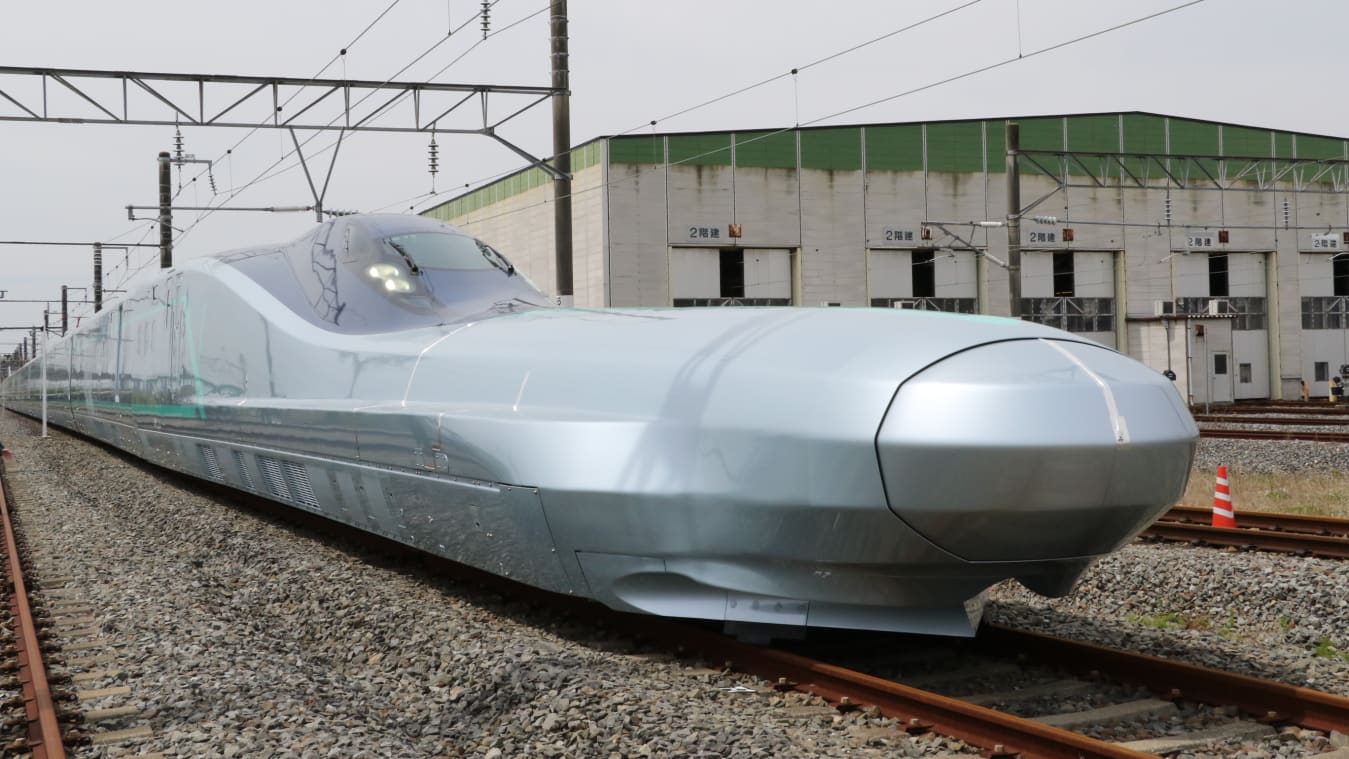
(CNN) — Japan has started testing its fastest-ever bullet train -- capable of reaching 400 kilometers per hour (249 mph) -- as it continues to develop the revolutionary mode of travel.
The ALFA-X version of the Shinkansen train began three years' worth of test runs on Friday.
Once it enters operation sometime around 2030, it will run at speeds of up to 360 kph (224 mph), comfortably making it the world's fastest bullet train.
It will also outpace China's Fuxing train, which runs at 10 kph slower despite being designed with the same top speed capabilities as the ALFA-X.
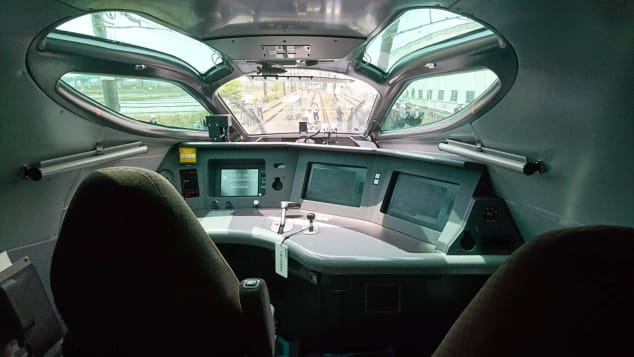
The model will operate at speeds of up to 360 km/h.
The model's futuristic design features 10 cars and a long pointed nose.
It'll be tested on the line between the cities of Sendai and Aomori, which are about 280 kilometers apart as the crow flies. Tests will take place after midnight, when the line is quiet, and will occur twice a week.
The ALFA-X marks a new stage of growth for the Shinkansen, pushing the world-renowned high speed rail service even faster towards the future.
Its testing debut comes as Japan's new high-speed Shinkansen N700S continues tests that began just over a year ago.
That model will enter operation in 2020, but its maximum speeds of 300 kph -- the same as other N700 series trains -- will be easily surpassed by the ALFA-X.
The flurry of new models coincides with Japan's preparations to host the 2020 Summer Olympics in Tokyo.
No matter what speeds the train achieves during its test runs, it won't match the record-breaking pace of Japan Railway's magnetic levitation, or maglev, train which hit 603 kph (374 mph) on an experimental track in 2015.
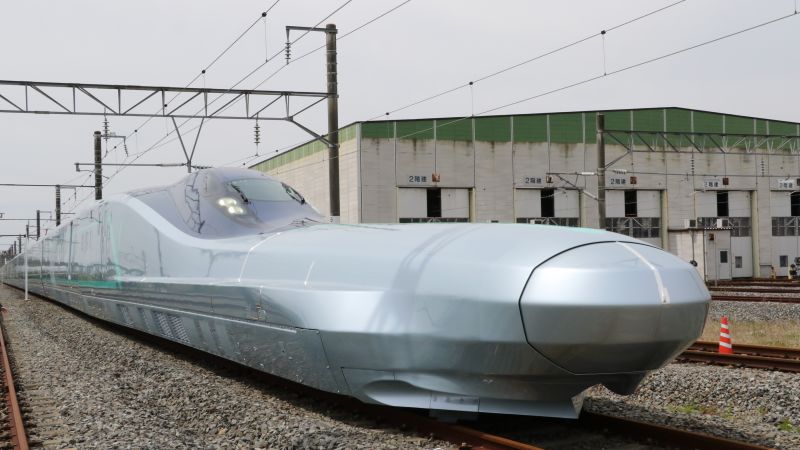
 edition.cnn.com
edition.cnn.com
Rob Picheta, CNN • Updated 10th May 2019

(CNN) — Japan has started testing its fastest-ever bullet train -- capable of reaching 400 kilometers per hour (249 mph) -- as it continues to develop the revolutionary mode of travel.
The ALFA-X version of the Shinkansen train began three years' worth of test runs on Friday.
Once it enters operation sometime around 2030, it will run at speeds of up to 360 kph (224 mph), comfortably making it the world's fastest bullet train.
It will also outpace China's Fuxing train, which runs at 10 kph slower despite being designed with the same top speed capabilities as the ALFA-X.

The model will operate at speeds of up to 360 km/h.
The model's futuristic design features 10 cars and a long pointed nose.
It'll be tested on the line between the cities of Sendai and Aomori, which are about 280 kilometers apart as the crow flies. Tests will take place after midnight, when the line is quiet, and will occur twice a week.
The ALFA-X marks a new stage of growth for the Shinkansen, pushing the world-renowned high speed rail service even faster towards the future.
Its testing debut comes as Japan's new high-speed Shinkansen N700S continues tests that began just over a year ago.
That model will enter operation in 2020, but its maximum speeds of 300 kph -- the same as other N700 series trains -- will be easily surpassed by the ALFA-X.
The flurry of new models coincides with Japan's preparations to host the 2020 Summer Olympics in Tokyo.
No matter what speeds the train achieves during its test runs, it won't match the record-breaking pace of Japan Railway's magnetic levitation, or maglev, train which hit 603 kph (374 mph) on an experimental track in 2015.

Japan tests world's fastest bullet train | CNN
Japan has started testing its fastest-ever bullet train. The ALFA-X version of the high speed Shinkansen train is designed to be capable of reaching 400 kilometers per hour, or 249 mph.
JR East to build ALFA-X 360 km/h Shinkansen testbed
07 Jul 2017
JAPAN: East Japan Railway has announced its intention build a further high speed test train, as part of a programme to develop its next generation of Shinkansen trains.
JR East announced on July 4 that it expects to put the 10-car unit into operation in the spring of 2019. Dubbed ALFA-X (Advanced Labs for Frontline Activity in rail eXperimentation), the 360 km/h trainset will build on earlier research undertaken with the Fastech 360S and 360Z test trains. These led to the development of the 320 km/h Series E5 and E6 trainsets which currently operate on the Tohoku Shinkansen.
According to JR East President Tetsuro Tomita, the new generation of trainsets will be needed by the end of the 2030 financial year to coincide with completion of the 211·7 km Hokkaido Shinkansen extension to Sapporo. Running at 360 km/h would be necessary to achieve a journey time of around 3 h over the 1 075 km route between Tokyo and Sapporo.
As with the Fastech trains, a key priority for the research will be to minimise the noise created by running faster, as well as minimising the pressure pulses when entering tunnels at very high speeds. The ALFA-X driving cars will have two different nose profiles for comparative purpose. One will be similar in shape to the current Series E5 design but longer; the other will be the same length as existing noses but with a new profile.
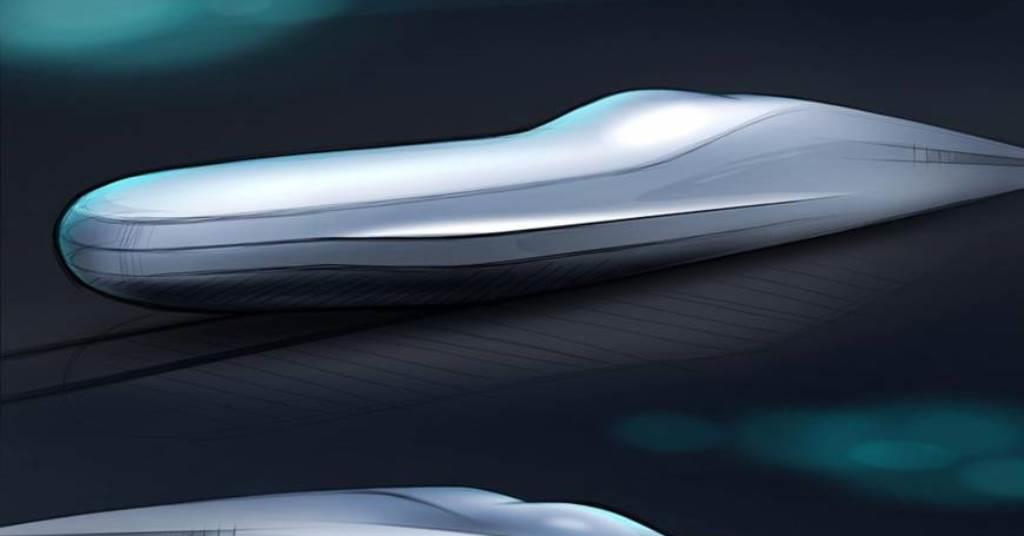
 www.railwaygazette.com
www.railwaygazette.com
07 Jul 2017
JAPAN: East Japan Railway has announced its intention build a further high speed test train, as part of a programme to develop its next generation of Shinkansen trains.
JR East announced on July 4 that it expects to put the 10-car unit into operation in the spring of 2019. Dubbed ALFA-X (Advanced Labs for Frontline Activity in rail eXperimentation), the 360 km/h trainset will build on earlier research undertaken with the Fastech 360S and 360Z test trains. These led to the development of the 320 km/h Series E5 and E6 trainsets which currently operate on the Tohoku Shinkansen.
According to JR East President Tetsuro Tomita, the new generation of trainsets will be needed by the end of the 2030 financial year to coincide with completion of the 211·7 km Hokkaido Shinkansen extension to Sapporo. Running at 360 km/h would be necessary to achieve a journey time of around 3 h over the 1 075 km route between Tokyo and Sapporo.
As with the Fastech trains, a key priority for the research will be to minimise the noise created by running faster, as well as minimising the pressure pulses when entering tunnels at very high speeds. The ALFA-X driving cars will have two different nose profiles for comparative purpose. One will be similar in shape to the current Series E5 design but longer; the other will be the same length as existing noses but with a new profile.

JR East to build ALFA-X 360 km/h Shinkansen testbed
JAPAN: East Japan Railway has announced its intention build a further high speed test train, as part of a programme to develop its next generation of Shinkansen trains. JR East announced on July 4 that it expects to put the 10-car unit into operation in the spring of 2019. ...
Revealed: Alfa-X, the world’s fastest bullet train – complete with a 72ft nose
Danielle Demetriou, Tokyo
10 May 2019
It is a futuristic shade of silver, has a super long nose stretching 72 feet - and is on track to become the world’s fastest bullet train.
Japan, the birthplace of high-speed rail travel, has unveiled its latest new generation bullet train Alfa-X, which will be able to travel at top speeds of 224 mph.
Test runs of the new train start Friday, with plans to put the new train into service by 2030, around the same time the nation’s bullet train network will extend to reach Sapporo, the main city in Japan’s northern Hokkaido region.
The new 10-carriage Alfa-X train is packed with new technology, and its distinct aerodynamic nose is dramatically elongated to minimise pressure and noise when passing through tunnels. Other features include specialist equipment to reduce the impact of possible earthquake tremors.
The new train’s speed will easily surpass the world’s fastest bullet trains which are currently in operation in Japan and France, travelling at a maximum speed of around 200mph.
The Alfa-X – which has a light green line running along its silver body – will start its debut test run on Friday night after the last train service, along a stretch of track between Sendai and Shin-Aomori stations on the Tohoku line in northern Japan.
Test runs of the new generation train – whose full name is something of a mouthful: “Advanced Labs for Frontline Activity in rail eXperimentation” – are due to take place roughly twice a week between now and March 2022.
Designed with high-tech features from vibration sensors to temperature sensors, testing will focus on all technical aspects of speed and safety throughout its 10 electric cars, which were manufactured by Kawasaki Heavy Industries and Hitachi.
Operators are planning to test run the new bullet train at its maximum possible speed of nearly 249 mph, although its top speed when in commercial operation will be capped at 224 mph.
Rail officials will also reportedly test the train with a nose stretching 52 feet in length as well as the prototype’s current 72 feet nose, in a bid to determine which will offer passengers the fastest and least noisy journey on board.
"We want to improve not only speed, but also safety and comfort,” Ichiro Ogawa, the head of JR East's research and development centre, told the Mainichi newspaper, as the prototype was unveiled to media.
It will also be - perhaps unsurprisingly - dramatically faster than trains in the UK, where average speeds tend to hover closer to 65 mph, while the Eurostar hits a maximum speed of around 186 mph.
Japan first unveiled its fleet of famed shinkansen bullet trains to the world amid much pomp and ceremony during the 1964 Tokyo Olympics, with the fast locomotives emerging as a symbol of the nation’s postwar economic recovery.
Although Japan and other nations are continuing to invest heavily in bullet-train technology today, the world’s fastest trains currently in operation are Maglev, which can travel at significantly higher speeds while hovering above magnetic rails.
Shanghai is home to the world’s fastest commercially operating Maglev train, which has a top speed of 268mph, enabling it to cover a 19-mile distance in just seven minutes and 20 seconds.

 www.telegraph.co.uk
www.telegraph.co.uk
Danielle Demetriou, Tokyo
10 May 2019
It is a futuristic shade of silver, has a super long nose stretching 72 feet - and is on track to become the world’s fastest bullet train.
Japan, the birthplace of high-speed rail travel, has unveiled its latest new generation bullet train Alfa-X, which will be able to travel at top speeds of 224 mph.
Test runs of the new train start Friday, with plans to put the new train into service by 2030, around the same time the nation’s bullet train network will extend to reach Sapporo, the main city in Japan’s northern Hokkaido region.
The new 10-carriage Alfa-X train is packed with new technology, and its distinct aerodynamic nose is dramatically elongated to minimise pressure and noise when passing through tunnels. Other features include specialist equipment to reduce the impact of possible earthquake tremors.
The new train’s speed will easily surpass the world’s fastest bullet trains which are currently in operation in Japan and France, travelling at a maximum speed of around 200mph.
The Alfa-X – which has a light green line running along its silver body – will start its debut test run on Friday night after the last train service, along a stretch of track between Sendai and Shin-Aomori stations on the Tohoku line in northern Japan.
Test runs of the new generation train – whose full name is something of a mouthful: “Advanced Labs for Frontline Activity in rail eXperimentation” – are due to take place roughly twice a week between now and March 2022.
Designed with high-tech features from vibration sensors to temperature sensors, testing will focus on all technical aspects of speed and safety throughout its 10 electric cars, which were manufactured by Kawasaki Heavy Industries and Hitachi.
Operators are planning to test run the new bullet train at its maximum possible speed of nearly 249 mph, although its top speed when in commercial operation will be capped at 224 mph.
Rail officials will also reportedly test the train with a nose stretching 52 feet in length as well as the prototype’s current 72 feet nose, in a bid to determine which will offer passengers the fastest and least noisy journey on board.
"We want to improve not only speed, but also safety and comfort,” Ichiro Ogawa, the head of JR East's research and development centre, told the Mainichi newspaper, as the prototype was unveiled to media.
It will also be - perhaps unsurprisingly - dramatically faster than trains in the UK, where average speeds tend to hover closer to 65 mph, while the Eurostar hits a maximum speed of around 186 mph.
Japan first unveiled its fleet of famed shinkansen bullet trains to the world amid much pomp and ceremony during the 1964 Tokyo Olympics, with the fast locomotives emerging as a symbol of the nation’s postwar economic recovery.
Although Japan and other nations are continuing to invest heavily in bullet-train technology today, the world’s fastest trains currently in operation are Maglev, which can travel at significantly higher speeds while hovering above magnetic rails.
Shanghai is home to the world’s fastest commercially operating Maglev train, which has a top speed of 268mph, enabling it to cover a 19-mile distance in just seven minutes and 20 seconds.

Revealed: Alfa-X, the world’s fastest bullet train – complete with a 72ft nose
It is a futuristic shade of silver, has a super long nose stretching 72 feet - and is on track to become the world’s fastest bullet train.
So technically Hyperloop tech is not the fastest.
So technically Hyperloop tech is not the fastest.
Different technology, Hyper loop will be faster than this, approx "670mph / 1,078kmph" since it's just a Maglev train in a vacuum tube.
Short Video
China’s high-speed rail carries record 10 billion passengers
Source:Global Times Published: 2019/May/12
China's high-speed railway had transported more than 10 billion passengers by the end of the first quarter of 2019, a new world record, China Railway said on Saturday.
By the end of March, the total volume was "3.34 trillion passenger-kilometers," China Railway said in a statement released on its official WeChat.
China had almost 30,000 kilometers of high-speed railway track in 2018, twice as long as the rest of the world's railways combined, the statement noted.
High-speed rail is proving an increasingly popular option for travelers in China. Railway authorities recorded more than 2 billion high-speed trips in 2018, an annual increase of nearly 17 percent, or over three-fifths of all rail passengers.
China's volume of railway passenger transport, freight volume, transport density and other major transport economic indicators consistently ranks first in the world, China Railway said.
Since China's first Beijing-Tianjin Intercity Railway in 2008, China has been the world No.1 in terms of operating mileage, the statement noted.
The Fuxing bullet trains, which went into operation in 2017, have carried nearly 200 million passengers with an average passenger load of 75 percent, 1.3 percent higher than other high-speed trains, according to China Railway.
China will see 850 Fuxing high-speed trains put into service by the end of this year.
China’s high-speed rail carries record 10 billion passengers - Global Times
Source:Global Times Published: 2019/May/12
China's high-speed railway had transported more than 10 billion passengers by the end of the first quarter of 2019, a new world record, China Railway said on Saturday.
By the end of March, the total volume was "3.34 trillion passenger-kilometers," China Railway said in a statement released on its official WeChat.
China had almost 30,000 kilometers of high-speed railway track in 2018, twice as long as the rest of the world's railways combined, the statement noted.
High-speed rail is proving an increasingly popular option for travelers in China. Railway authorities recorded more than 2 billion high-speed trips in 2018, an annual increase of nearly 17 percent, or over three-fifths of all rail passengers.
China's volume of railway passenger transport, freight volume, transport density and other major transport economic indicators consistently ranks first in the world, China Railway said.
Since China's first Beijing-Tianjin Intercity Railway in 2008, China has been the world No.1 in terms of operating mileage, the statement noted.
The Fuxing bullet trains, which went into operation in 2017, have carried nearly 200 million passengers with an average passenger load of 75 percent, 1.3 percent higher than other high-speed trains, according to China Railway.
China will see 850 Fuxing high-speed trains put into service by the end of this year.
China’s high-speed rail carries record 10 billion passengers - Global Times
Chinese Fuxing bullet train



Project Type
High-speed bullet train
Manufacturer
CRRC
Operator
China Railway Corp
Overall Length
More than 400m
Fuxing Hao is a new high-speed bullet train family designed and manufactured by Chinese company CRRC in collaboration with China Railway.
Operated by China Railway, the standard version of the Fuxing Hao high-speed train was officially introduced into service on the Beijing-Shanghai high-speed railway line in June 2017.
The locally built bullet trains can run faster than the Japanese Shinkansen and offer more reliability and operational efficiency.
The G7 Fuxing, an extended version of the Fuxing Hao bullet train, made its debut on the Beijing-Shanghai line in July 2018.
A new version of the vehicle is undergoing testing activities in Beijing and is expected to enter commercial service by the end of 2019.
The new bullet train is intended to offer a sophisticated, high-speed and enriched travel experience to passengers.
Fuxing Hao bullet train development
Development of the electric multiple unit high-speed trains started in 2012. China Railway led a consortium of research organisations, universities, and manufacturing companies for the development of China’s bullet train manufacturing capabilities.
The initial scheme design of the vehicle was formulated in September 2014. The vehicle was unveiled for the first time in June 2015.
Test runs for the vehicle were conducted in October 2015, which saw the vehicle clear the high-speed test by reaching 385km/h.
Fuxing trains are expected to replace the Hexie Hao high-speed trains within the next ten years.
Fuxing Hao bullet train design
Aerodynamic design reduces air resistance and enables the vehicle to reach higher operating speeds. It minimises operating expenses by reducing the amount of fuel consumed.
The train is offered in two configurations, which are a standard eight-car version and a 16-car version.
The length and width of the eight-car version are 209m and 3.36m respectively. It has a maximum axle load of 17t and can offer seating capacity for a maximum of 556 passengers.
The 16-car train has a length of 414.26m and a width of 3.36m and has a seating capacity for 1,200 passengers.
Designed to run on the ballastless tracks of the high-speed rail network in China, Fuxing Hao aims to offer spacious interiors and a comfortable travelling experience for passengers.
The trains offer more reliability and longer service throughout their 30-year lifespan.
Fuxing Hao bullet train features and performance
Train exteriors are decorated in red or golden colour schemes. The first class compartment in the train features comfortable seats that can be flattened into beds.
“The Fuxing bullet trains are currently operational on the major high-speed rail routes, including Beijing-Shanghai, Beijian-Xian, and Beijing-Tianjin lines.”
The seats also feature adjustable headrests and are spaced to provide comfortable legroom for passengers.
Occupants can charge their phones or laptops using the power outlets on the seats and have free access to the vehicle’s unlimited Wi-Fi connectivity.
Completely automated doors provide a smooth entry and exit for passengers. The seat information display system displays the seat number and availability.
The Fuxing bullet train also features an on-board monitoring system that automatically reduces speed during emergency conditions. The performance of the train is monitored by approximately 2,500 monitoring ports.
The average operating speed of the train is 350km/h, while the maximum speed is 400km/h. The train takes four hours to travel from Beijing to Shanghai, which is roughly one hour less compared to the next fastest train.
Routes covered by Fuxing Hao bullet train
The Fuxing bullet trains are currently operational on the major high-speed rail routes, including Beijing-Shanghai, Beijian-Xian, and Beijing-Tianjin lines. It is expected to provide high-speed connectivity to 16 major cities in China.
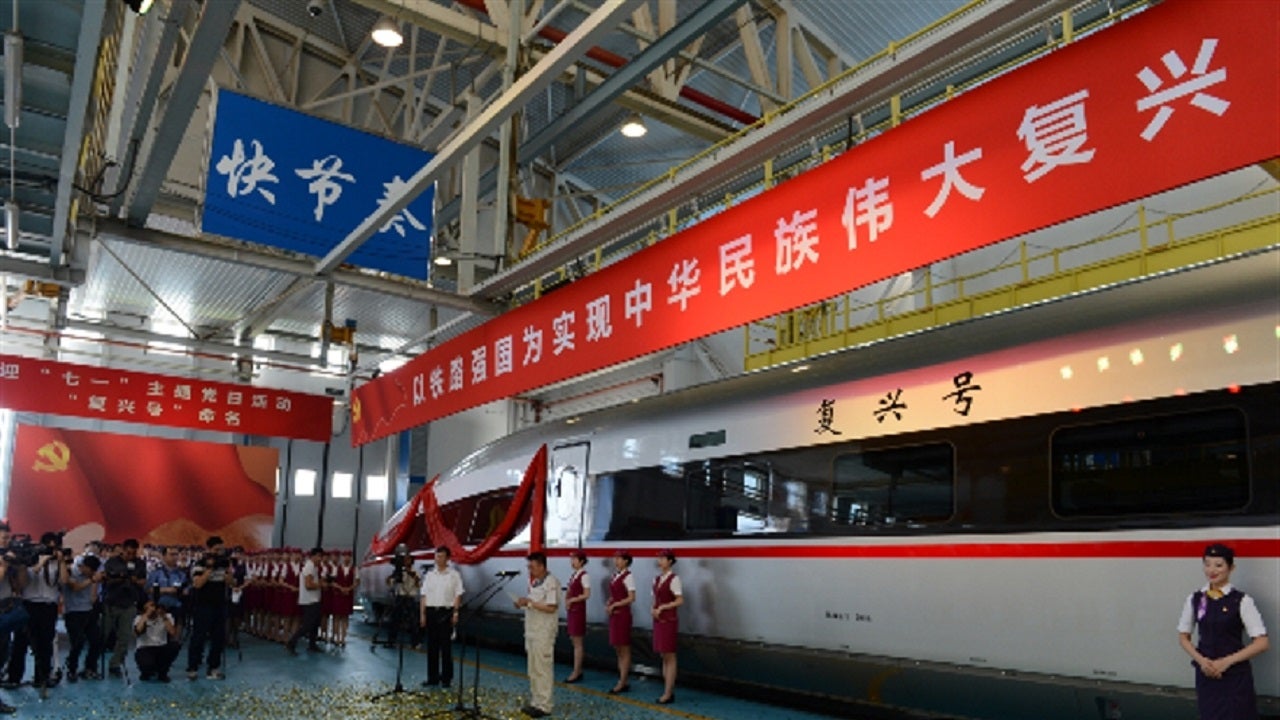
 www.railway-technology.com
www.railway-technology.com
Project Type
High-speed bullet train
Manufacturer
CRRC
Operator
China Railway Corp
Overall Length
More than 400m
Fuxing Hao is a new high-speed bullet train family designed and manufactured by Chinese company CRRC in collaboration with China Railway.
Operated by China Railway, the standard version of the Fuxing Hao high-speed train was officially introduced into service on the Beijing-Shanghai high-speed railway line in June 2017.
The locally built bullet trains can run faster than the Japanese Shinkansen and offer more reliability and operational efficiency.
The G7 Fuxing, an extended version of the Fuxing Hao bullet train, made its debut on the Beijing-Shanghai line in July 2018.
A new version of the vehicle is undergoing testing activities in Beijing and is expected to enter commercial service by the end of 2019.
The new bullet train is intended to offer a sophisticated, high-speed and enriched travel experience to passengers.
Fuxing Hao bullet train development
Development of the electric multiple unit high-speed trains started in 2012. China Railway led a consortium of research organisations, universities, and manufacturing companies for the development of China’s bullet train manufacturing capabilities.
The initial scheme design of the vehicle was formulated in September 2014. The vehicle was unveiled for the first time in June 2015.
Test runs for the vehicle were conducted in October 2015, which saw the vehicle clear the high-speed test by reaching 385km/h.
Fuxing trains are expected to replace the Hexie Hao high-speed trains within the next ten years.
Fuxing Hao bullet train design
Aerodynamic design reduces air resistance and enables the vehicle to reach higher operating speeds. It minimises operating expenses by reducing the amount of fuel consumed.
The train is offered in two configurations, which are a standard eight-car version and a 16-car version.
The length and width of the eight-car version are 209m and 3.36m respectively. It has a maximum axle load of 17t and can offer seating capacity for a maximum of 556 passengers.
The 16-car train has a length of 414.26m and a width of 3.36m and has a seating capacity for 1,200 passengers.
Designed to run on the ballastless tracks of the high-speed rail network in China, Fuxing Hao aims to offer spacious interiors and a comfortable travelling experience for passengers.
The trains offer more reliability and longer service throughout their 30-year lifespan.
Fuxing Hao bullet train features and performance
Train exteriors are decorated in red or golden colour schemes. The first class compartment in the train features comfortable seats that can be flattened into beds.
“The Fuxing bullet trains are currently operational on the major high-speed rail routes, including Beijing-Shanghai, Beijian-Xian, and Beijing-Tianjin lines.”
The seats also feature adjustable headrests and are spaced to provide comfortable legroom for passengers.
Occupants can charge their phones or laptops using the power outlets on the seats and have free access to the vehicle’s unlimited Wi-Fi connectivity.
Completely automated doors provide a smooth entry and exit for passengers. The seat information display system displays the seat number and availability.
The Fuxing bullet train also features an on-board monitoring system that automatically reduces speed during emergency conditions. The performance of the train is monitored by approximately 2,500 monitoring ports.
The average operating speed of the train is 350km/h, while the maximum speed is 400km/h. The train takes four hours to travel from Beijing to Shanghai, which is roughly one hour less compared to the next fastest train.
Routes covered by Fuxing Hao bullet train
The Fuxing bullet trains are currently operational on the major high-speed rail routes, including Beijing-Shanghai, Beijian-Xian, and Beijing-Tianjin lines. It is expected to provide high-speed connectivity to 16 major cities in China.

Fuxing Hao Series Bullet Trains
Fuxing Hao is a new high-speed bullet train family designed and manufactured by Chinese company CRRC in collaboration with China Railway.
China rolls out high-speed maglev train with top speed of 600 kmph
Source:Global Times Published: 2019/5/23
A prototype high-speed maglev train with a top speed of 600 kilometers (km) per hour rolled off the assembly line in Qingdao, East China's Shandong Province on Thursday, the Xinhua News Agency reported.
The completion of the maglev train at 10:50 am Thursday marked a major breakthrough by China in the field of high-speed maglev technology, the one-paragraph-long Xinhua report said.
China has been pursuing maglev technology since the first decade of this century and is a leading country in terms of maglev mileage.
A maglev line has linked Shanghai's Pudong airport with the city center since 2006 on a 30-kilometer-long track, using German technology. The service, with a top speed of 300 kilometers per hour, had safely transported a total of 50 million passengers by September 2017.
Zhuzhou in Central China's Hunan Province and Beijing each have a section of low-speed maglev lines in service.
The prototype high-speed train will be a vital part in mastering the design, manufacturing, testing and evaluation process for obtaining proprietary maglev technology, according to influential social media outlet tieluguancha.
High-speed maglev trains will ideally fit into the modern travel pattern in China, which is dominated by high-speed trains running at 350 km per hour and jet planes travelling at 800 km per hour, the report said.
The maglev trains would offer the fastest way of traveling a distance of 1,500 kilometers, the outlet reported, citing an expert.
Global Times
Source:Global Times Published: 2019/5/23
A prototype high-speed maglev train with a top speed of 600 kilometers (km) per hour rolled off the assembly line in Qingdao, East China's Shandong Province on Thursday, the Xinhua News Agency reported.
The completion of the maglev train at 10:50 am Thursday marked a major breakthrough by China in the field of high-speed maglev technology, the one-paragraph-long Xinhua report said.
China has been pursuing maglev technology since the first decade of this century and is a leading country in terms of maglev mileage.
A maglev line has linked Shanghai's Pudong airport with the city center since 2006 on a 30-kilometer-long track, using German technology. The service, with a top speed of 300 kilometers per hour, had safely transported a total of 50 million passengers by September 2017.
Zhuzhou in Central China's Hunan Province and Beijing each have a section of low-speed maglev lines in service.
The prototype high-speed train will be a vital part in mastering the design, manufacturing, testing and evaluation process for obtaining proprietary maglev technology, according to influential social media outlet tieluguancha.
High-speed maglev trains will ideally fit into the modern travel pattern in China, which is dominated by high-speed trains running at 350 km per hour and jet planes travelling at 800 km per hour, the report said.
The maglev trains would offer the fastest way of traveling a distance of 1,500 kilometers, the outlet reported, citing an expert.
Global Times
